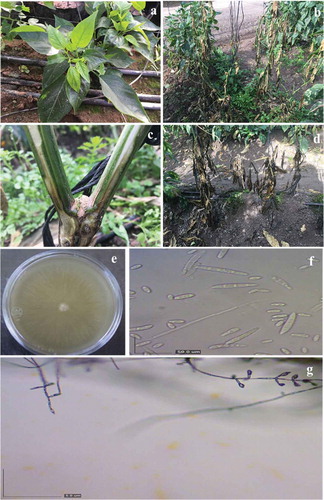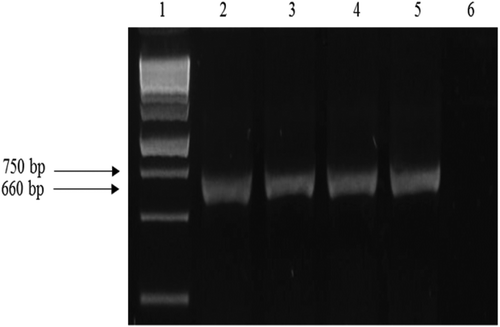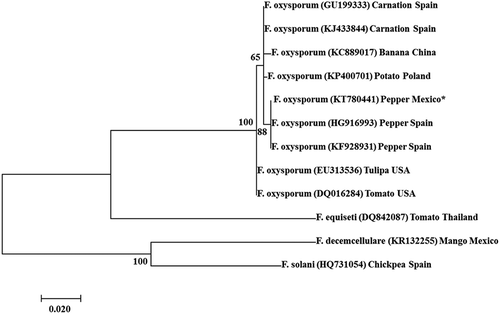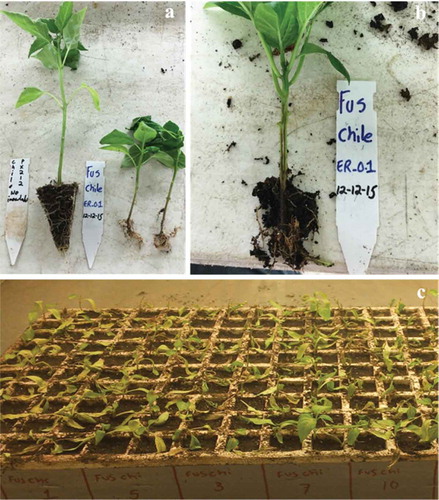Figures & data
Table 1. Conditions of annealing temperatures and sequences of primers TEF-1α for PCR analysis of Fusarium spp.
Fig. 1 (Colour online) Symptoms on diseased pepper plants. (a) Chlorotic leaves. (b) Wilted plants. (c) Dark-brown discolouration of xylem vessels 30 cm above the base of the plants. (d) Dead plants. (e-g) Fungal isolates from diseased pepper plants. (e) Top view of a typical colony growing on potato dextrose agar. (f) Microconidia and macroconidia, scale bar = 50 µm, (g) Phialides = 5 µm.

Table 2. Pooled results of the first and second pathogenicity assay with Capsicum annuum ‘Lorca’ inoculated with 10 monoconidial Fusarium oxysporum strains isolated from pepper plants.
Fig. 2 PCR products obtained from genomic DNA of isolates of Fusarium oxysporum with the primer pair EF-1 and EF-2, viewed on a 1.0% agarose gel. Lane-1 ‘HyperLadder 1kb Plus’; lanes 2–4: isolates from diseased pepper plants; lane 5: purified mycelium of F. oxysporum isolate (positive control); lane 6: negative control.

Fig. 3 Phylogenetic dendrogram using Neighbour-joining method based on the alignment of partial nucleotide sequences of the TEF-1α gene of Fusarium oxysporum with that of a selected F. oxysporum isolate (number 8 *) included in both pathogenicity trials. Values at the nodes represent the percentage bootstrap scores (1000 replicates), with only those values above 50 shown.

Fig. 4 (Colour online) Inoculation studies. (a) Control plant inoculated with agar medium (left) and plants (right) inoculated with Fusarium oxysporum isolated from pepper plants. (b) Dark necrosis of vascular tissues from one pepper plant inoculated with the same strain of F. oxysporum. Photographs a and b were taken 50 days after inoculation. (c) View of a tray of pepper plants inoculated with four different monoconidial strains of F. oxysporum. Photo was taken 29 days after inoculation.

